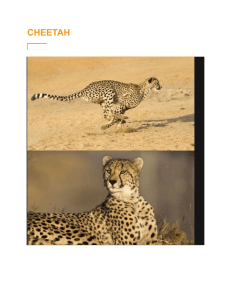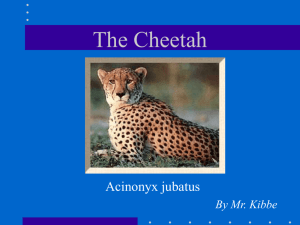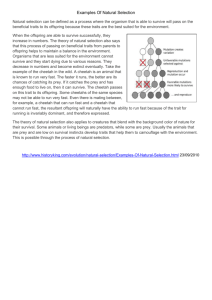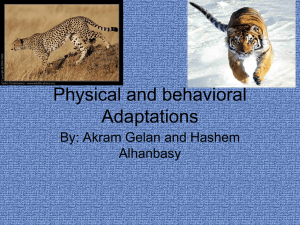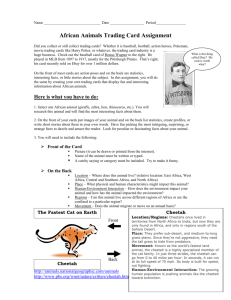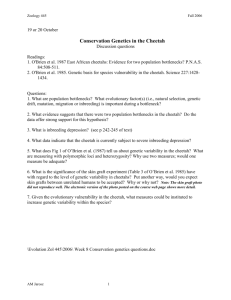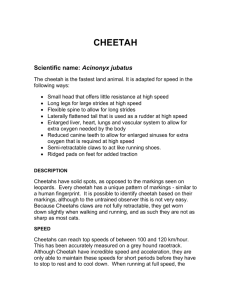Cheetah
advertisement
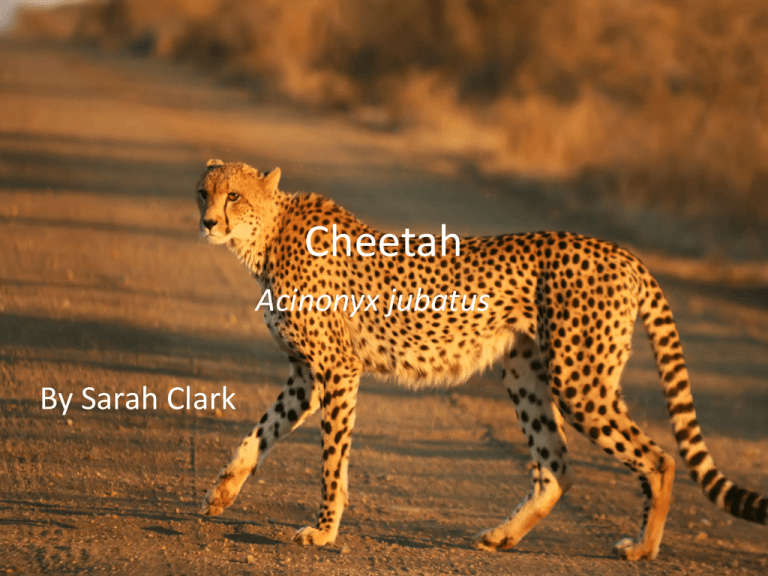
Cheetah Acinonyx jubatus By Sarah Clark Description • The Cheetah is fastest land animal in the world, able to reach speeds up to seventy miles per hour. • It has a slender body and long legs to help it achieve high speeds. • It is tan with black spots with distinctive “tear streaks” under their eyes. • It has a smaller head and smaller ears than most other big cats. Diet • Eats: – Gazelles – Wildebeest calves – Impalas – Smaller, hoofed animals. Where is it Found? • From India to South Africa • Used to be prevalent all throughout this range, but now it is mostly found below Saharan • Thrives in a variety of ecosystems including: – Plains – Savannah – Woodland – Semi-barren zones. Why is it Endangered? • Human Encroachment which leads to: – Habitat loss – Conflicts with humans • Decline in prey populations • Loss of cubs due to predation • Inbreeding and loss of genetic variation, resulting in birth defects • Cheetahs get exhausted after their “chases” where they exert large amounts of energy to catch their prey. While they are resting and gaining their energy, in many cases, their freshly killed prey is taken by a more aggressive carnivore. How Many Remain? • In some countries, such as Namibia, the Cheetah population is strong and thriving • In the US, it is marked as endangered on the Endangered Species List • In 1900, there were over 100,000 cheetahs, but now there are only between 9,000 and 12,000 left. Why Are They Important? • Keeps prey populations in check so that they don’t run rampant and ruin the environment • Cheetahs hunt the easier prey, they strengthen the gene pools of other species by not letting the genes of the slower and weaker animals pass on. Conservation Efforts • Conservationists are teaching livestock owners and people living in the encroaching areas how to deal with cheetahs and how to decrease the amount of violent interactions between humans and cheetahs • Endangered species laws, anti-poaching laws, and habitat restoration have been heavily enforced, helping the cheetah population to stabilize in many places. What Else Can We Do? • Humans must: – Protect the Cheetah’s habitat – Stop the capture and removal of the Cheetah from its natural home – Become educated about the cheetah – Raise awareness about endangered species Success • Fairy successful. Cheetah populations have stabilized in many places • In Namibia, the country with the largest cheetah population, their numbers have stabilized • However, the Asian Cheetah is nearly extinct Bibliography • Cheetah. (n.d.). Defenders of Wildlife. Retrieved January 31, 2014, from http://www.defenders.org/cheetah/Cheetah • Conservation Fund. (n.d.).Cheetah Conservation Fund. Retrieved January 31, 2014, from http://www.cheetah.org/ • Fitzgerald, J., & Alsaffar, A. (n.d.). Cheetah (Acinonyx jubatus). Tree of Life Web Project. Retrieved January 31, 2014, from http://tolweb.org/treehouses/?treehouse_id=48 30
